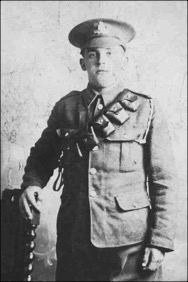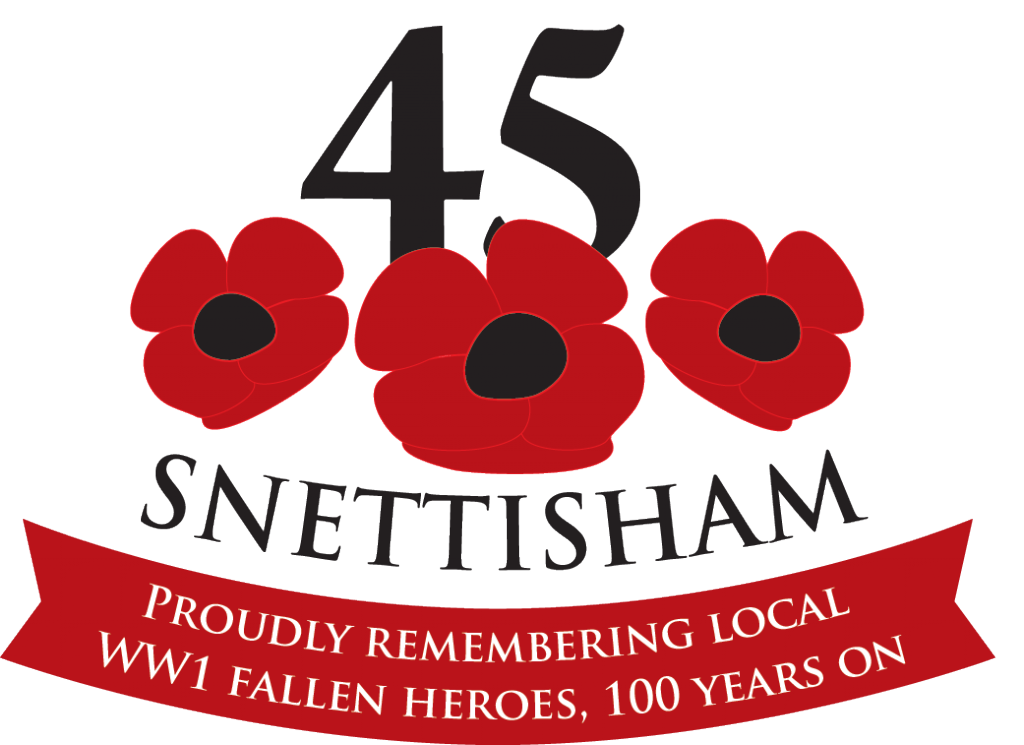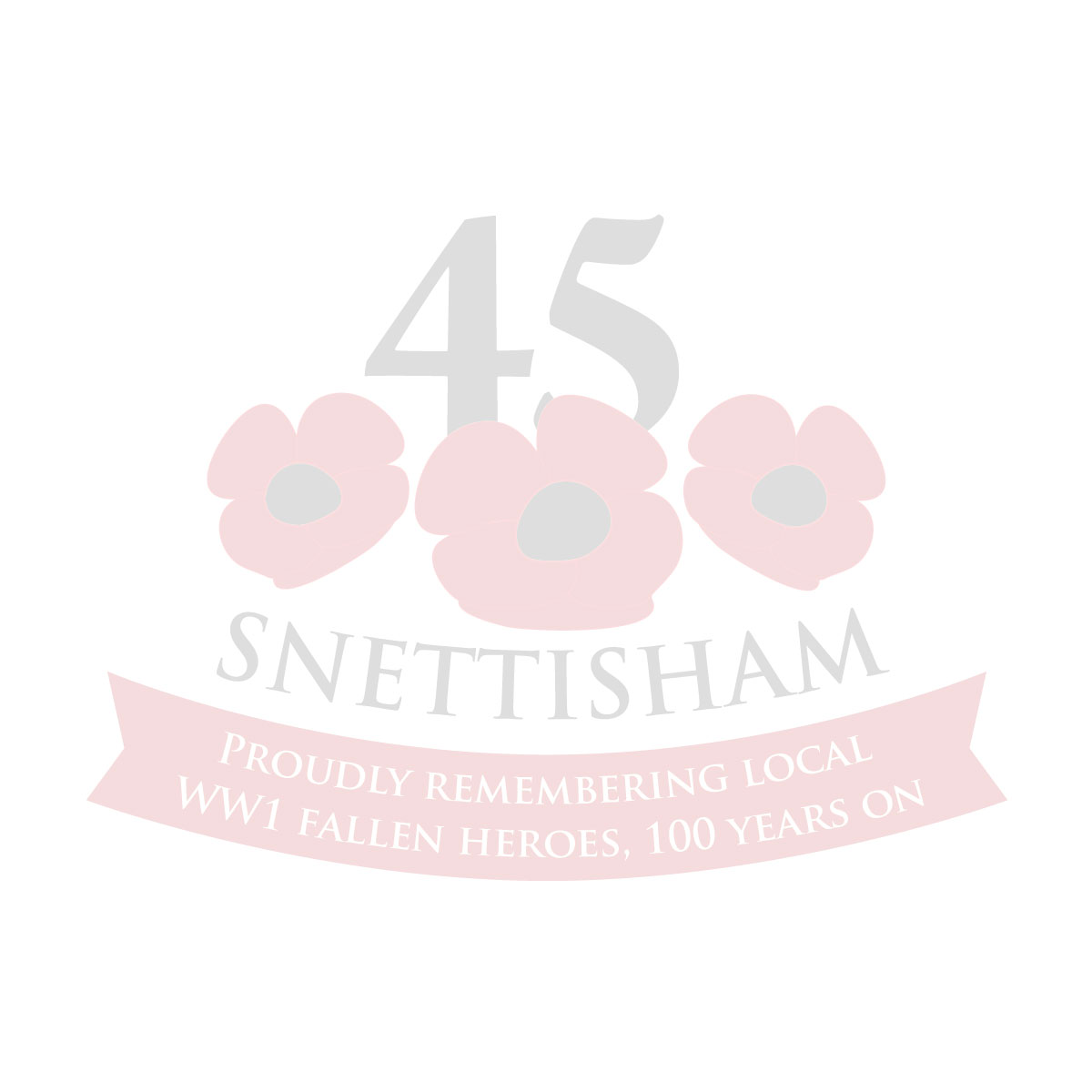William Dolman

The soldier:
William Dolman enlisted into the army in Brockenhurst, Hampshire (a village in the New Forest). He was assigned to the 10th Royal Hussars (Prince of Wales’) Own Regiment and given regimental number 24957.
He was killed on the 11th June 1917 whilst serving as a Private in ‘B squadron’ of that Regiment. He is buried in grave A.1 of the CWGC Villers-Faucon Communal Cemetery, Somme, France.
His name is inscribed upon both of Snettisham’s war memorials and its ‘Roll of Honour’. It also appears on the war memorial gates at Lyndhurst, Hampshire.
He was posthumously awarded the Victory medal and the British War medal for his service.
Whilst the exact circumstances of William’s death are unknown, it is known that he was serving in the dismounted parties, engaged in trench warfare (the mounted regiment’s being used in this way to bolster the front line).
What is known is that on the 2nd June 1917, men of the former 10th Royal Hussars who had been at Courcelles proceeded to Epehy 20kms from Peronne. Here they took over from the 6th Calvary brigade at a section of the front line to the East of Peronne known as ‘D.I sector’. This overlooked Vendhuile and Ossus Wood. The men did considerable work on the trench system and also a portion of an advanced position known as ‘The Bird Cage’. The German front line was only about 100 metres form the ‘front of the Bird Cage’, so near that if someone shouted they could be heard by their enemy.
It is almost certain that William died in one of the frequent skirmishes or raiding parties (either in to the enemy’s trenches or theirs in to ours) due to the close proximity of the front lines at this point. There are supportive accounts/records of what this must have been like, including;
In the days before 17th June 1917, aerial reconnaissance by the allies identified the Germans were building a ‘sap’ trench out from their front line towards the ‘Bird Cage’ (in trench warfare digging a ‘sap’ trench out at roughly 90 degrees from the front line towards the enemy and then coming off parallel to it to create a new ‘front line’ was a slow, but relatively safe way of moving forward’). Night reconnaissance showed that this was well-advanced and well-wired and work was being carried out every night to extend it. This was clearly a high risk to the British position and shows the degree of activity in the area around the time of William’s death. A decision was taken to raid this encroaching enemy position and this took place on the 17th June 1917.
26th June 1917 – Second Lieutenant John Spencer Dunville of the 1st (Royal) Dragoons (who died in the same place and the same month as William and is buried in the same cemetery) died of wounds inflicted whilst leading a successful trench raid against the enemy.
The man:
William ‘Willie’ Dolman was born on the 6th September 1888 in Bickington, Devon (on the edge of Dartmoor). His parents were James and Mary Dolman (his mother’s maiden name being ‘Sellick’).
James (William’s father) had been born in Snettisham, Norfolk in 1859. James met Mary in Devon (Mary being born in Bickington) whilst stationed there in the Norfolk Regiment. According to census records they married in 1887.
By the 1891 census, William’s parents had moved back to Snettisham. The record showing James occupation as a ‘general labourer’, aged 32 and Mary as aged 24. Living with them was William’s younger sister, Eliza, who was born on the 12th May 1890 in Aldershot, Hampshire.
A 3 year old William was shown at the time of the census as staying with his Grandparents, James (60) and Harriet Dolman (61) elsewhere in Snettisham.
On the 20th June 1895, William enrolled in Snettisham school (still the existing village primary school). The contemporaneous register records him as ‘Willie’ son of James. He remains for his entire schooling leaving on the 14th September 1901 to go to ‘work’.
By the 1901 census the entire family are living at an address in Station Road, Snettisham (one its main streets). James is now 40 and working as a ‘bricklayer labourer’. Mary is 33. William is 14 and now working as a ‘farm labourer’. Eliza (now known as Elsie) is 11 and at school. William has two new younger siblings; James (also known as Jimmy and Jas) born on the 24th September 1894 and Nellie, born on the 3rd January 1896.
Like William, Elsie, James and Nellie all attended Snettisham school for their entire schooling (Elsie – 12/5/90 to 2/5/04, James – 1/6/02 to 31/7/08, Nellie 1/6/03).
By the 1911 census James (now 50) recorded as ‘Jas’ and Mary (now 40) were still living in Station Road, Snettisham. With them were the two youngest children, James (also recorded as ‘Jas’) and Nellie. James Snr. was still working as a ‘Bricklayer labourer’, James Jnr. was ‘unemployed’ and Nellie was still at school.
William and Elsie had left the family home.
In the 1911 census, William H Dolman, born in Bickington, Devon in c.1889 is shown residing a short distance from Snettisham in Lincoln Lane, Metheringham, Lincolnshire. He is shown as a 22 year old ‘single’ border, living with the Porter family. William’s occupation is listed as ‘kennelman’ and he is shown working for the famous ‘Blankney Hunt’ still in existence today. This information ties in with that provided by William’s modern descendants who state he was also a kennelman for the Snettisham Foxhounds and eventually Master of the Hunt.
The family state that William later moved down to Emery Down near Lyndhurst in Hampshire to work in charge of the Hunt here. whilst in Lyndhurst William met and fell in love with May Louise Gates, a local girl. They married in the New Forest in the later part of 1913.
Sadly there are no children evident from this too brief, cut short marriage.
May remarried after William’s death and emigrated to Canada. Commonwealth War Graves Commission records from c. 1921/22 show Private 24957 W H Dolman’s next of kin as being Mrs. M.L Davis (formerly Dolman) of Lloydminster, Saskatchewan, Canada.
Both William’s father James and his brother, also James, served their country during the war. Both their names appear on the Snettisham ‘roll of Honour’ of men who fought and survived. James senior enlisted in to the RAF in Kings Lynn, Norfolk on the 22nd September 1914. He was assigned enlistment number 409510. At this time it is unclear which branch of the military James served in.
With sincere thanks to the family of William Henry Dolman.
Picture; William Henry Dolman standing proudly in uniform.

